Understanding the Challenges and Strengths
Teaching reading and writing to children with autism involves navigating unique developmental pathways. While these children often face difficulties with comprehension, social communication, and motor skills, they also demonstrate notable strengths, such as responsiveness to visual supports and technology. This article explores comprehensive approaches that leverage these strengths, address common challenges, and incorporate innovative technologies to enhance literacy skills effectively.
Foundational Pre-Writing Skills Development
What techniques can be used to develop pre-writing skills in children with autism?
Development of pre-writing skills is crucial for children with autism, and several techniques can effectively support this phase. Engaging children in visual and sensory activities helps foster their interest and build the foundational movements needed for writing.
Activities such as drawing on easels, using sidewalk chalk outdoors, and tracing shapes in sand or clay provide multisensory experiences that captivate children's attention. These methods encourage purposeful hand movements and coordination without the pressure of formal writing.
For children who find it challenging to make eye contact with writing surfaces, incorporating play and sensory-rich activities can be especially beneficial. These strategies help in capturing their interest and motivate them to participate actively in pre-writing tasks.
Using visual cues like stickers or colored lines to trace shapes and letters further supports skill development by offering clear, engaging targets. These tools also help children learn to control their hand movements and understand the connection between visual symbols and motor actions.
In summary, sensory and visual activities—like drawing, tracing, and exploring tactile materials—are highly effective techniques for nurturing pre-writing skills in children with autism, creating a playful environment that promotes learning and confidence.
For more details on pre-writing activities suitable for children with autism, searching terms like "Pre-writing activities for children with autism" can provide additional resources and ideas.
Age-Appropriate Expectations and Early Literacy Activities
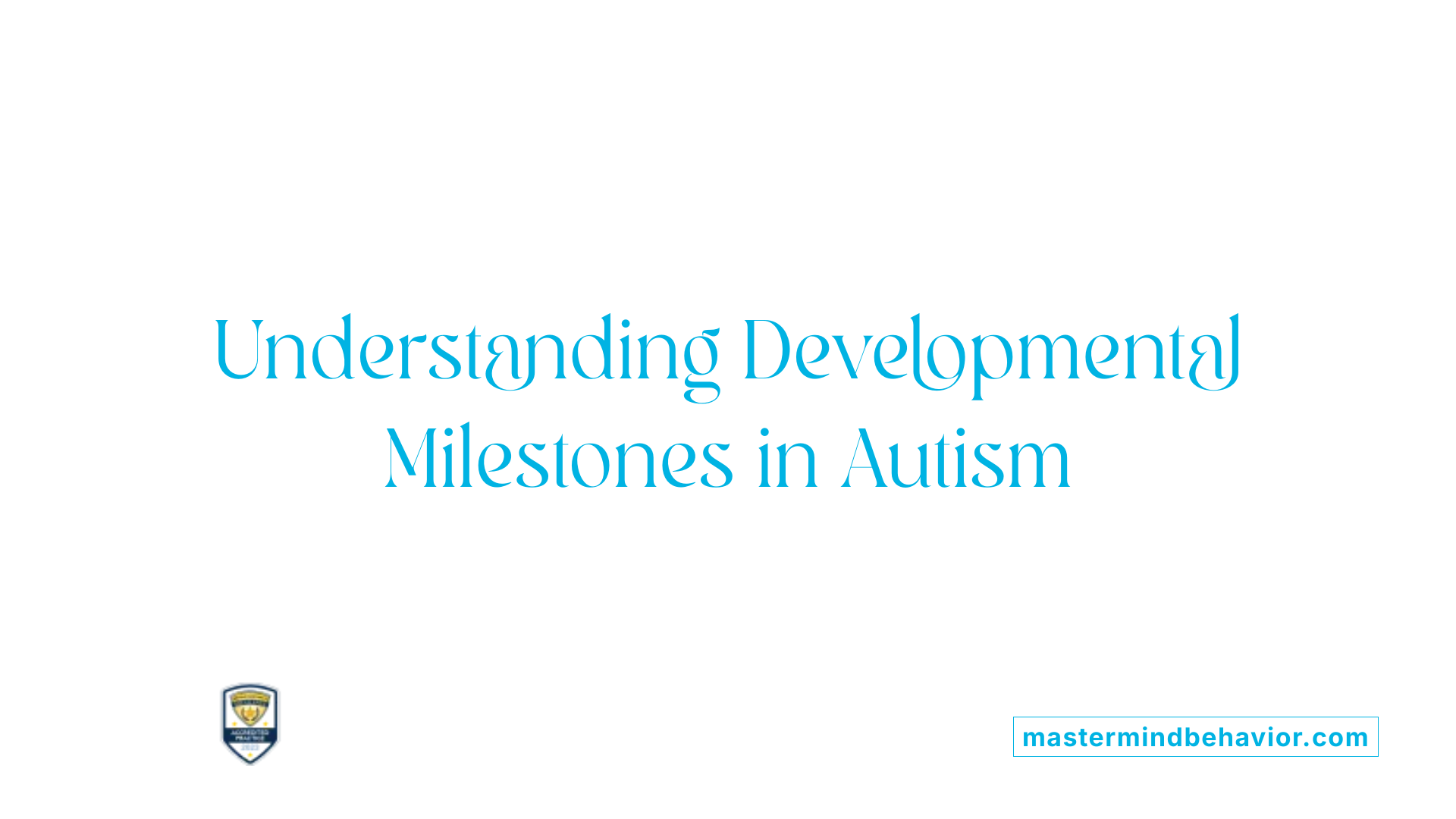
What are appropriate literacy milestones for young children with autism?
Children with autism benefit from tailored literacy activities that meet their developmental stage. By age 4, most children are not yet expected to write clear, legible letters. Instead, they can start engaging in activities like copying basic shapes, tracing letters, and exploring simple visual cues. These foundational tasks are crucial for developing fine motor skills and building confidence in their ability to produce symbols.
Introducing activities such as drawing on easels, sidewalk chalk, and tracing shapes in sand or clay captures their interest while fostering purposeful movements essential for writing. For non-verbal children, engaging with visual cues such as stickers or colored lines can serve as effective tools to encourage participation and develop pre-writing skills.
Copying shapes and tracing letters for four-year-olds
At age 4, children's focus should be on concrete, multisensory activities that prepare them for later literacy tasks. Tracing shapes and copying basic forms help strengthen hand-eye coordination and reinforce recognition of visual patterns. These activities lay the groundwork for letter recognition and eventually, decoding skills.
Using play-based sensory activities encourages children to experiment with forming shapes and lines, making the learning process enjoyable. For example, children can trace shapes in sand or clay, which offers tactile feedback and helps solidify their understanding of spatial relationships.
Introduction of simple shapes and letter recognition
Introducing simple shapes and letter forms in a structured, playful way can advance emergent literacy. Using visual cues like colored lines or stickers to highlight letter beginnings or parts can guide children’s attention and make learning more engaging. For children with autism, combining these visual strategies with repetitive practice supports memory and skill acquisition.
Research suggests that focusing on one new shape or letter at a time and providing frequent review prevents overwhelm. These early activities connect to later reading and writing abilities, making early literacy development accessible and effective for children on the autism spectrum.
Supporting Nonverbal and Minimally Verbal Learners
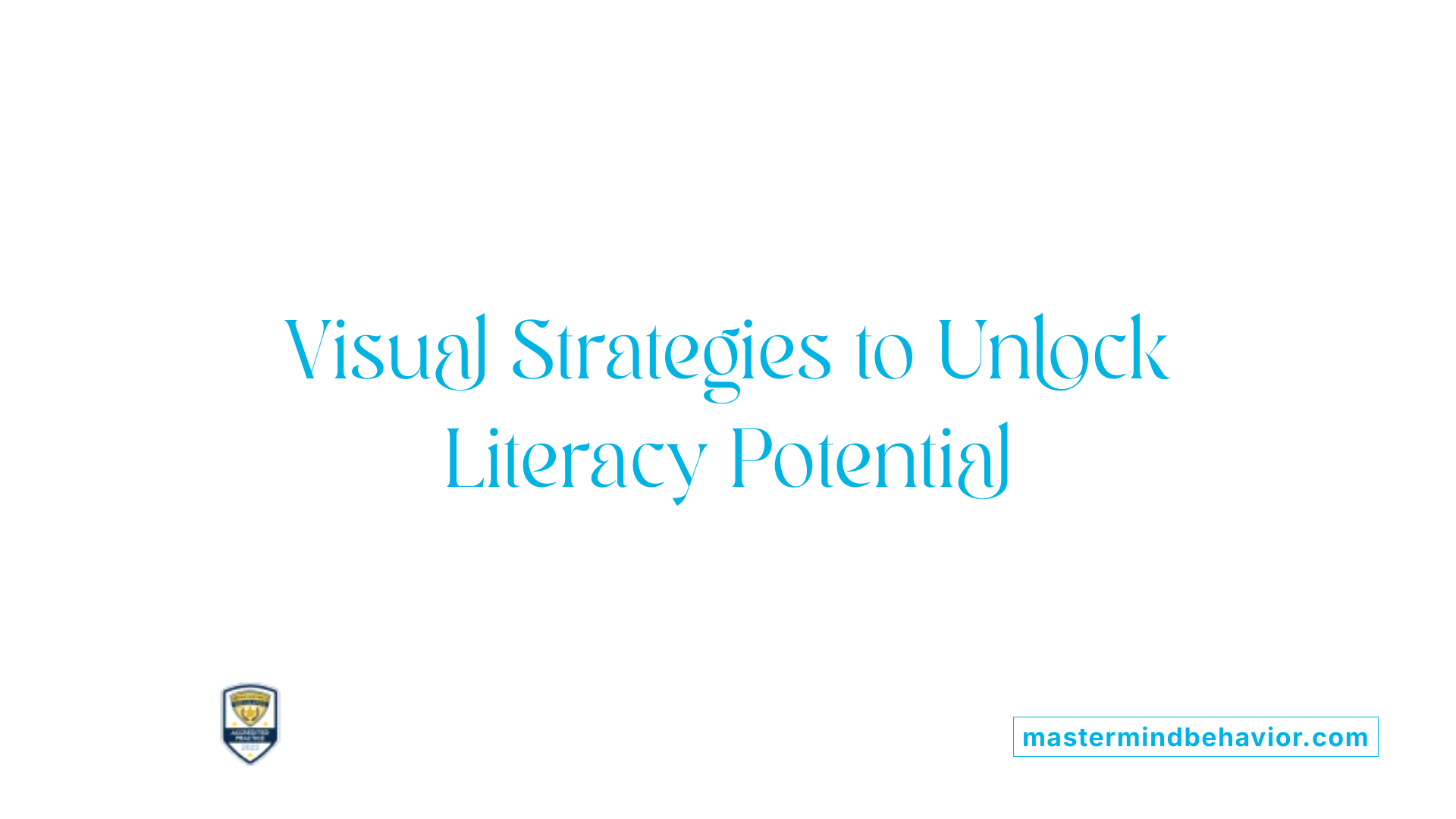
How can non-verbal children learn to read?
Children with autism who are minimally verbal or non-verbal can still develop reading skills by using alternative, visual-based methods. These approaches do not depend on spoken language, making them accessible for children with limited speech.
One effective strategy is matching words to pictures. This involves presenting a picture of an object or action alongside its written word, helping children associate visual cues with written language. This method supports vocabulary building and decoding skills.
Typing words using assistive technology is another powerful tool. Children can use speech-generating devices or adaptive keyboards to spell out words. Over time, this helps them connect written symbols with objects or actions, fostering literacy and independent communication.
Following written texts and visual cues is also crucial. Kids can engage with stories or instructions written on screens or paper, supported by visual aids like pictures, symbols, or color-coded lines. This not only improves reading comprehension but also enhances their ability to interpret written information in everyday settings.
Incorporating these strategies creates a multisensory learning environment that caters to individual needs and preferences. It encourages active participation and demonstrates that literacy is achievable beyond spoken language.
More research and practical resources on reading strategies for non-verbal children with autism can further inform educators and parents aiming to support these learners effectively.
Use of Assistive Technology in Literacy Development
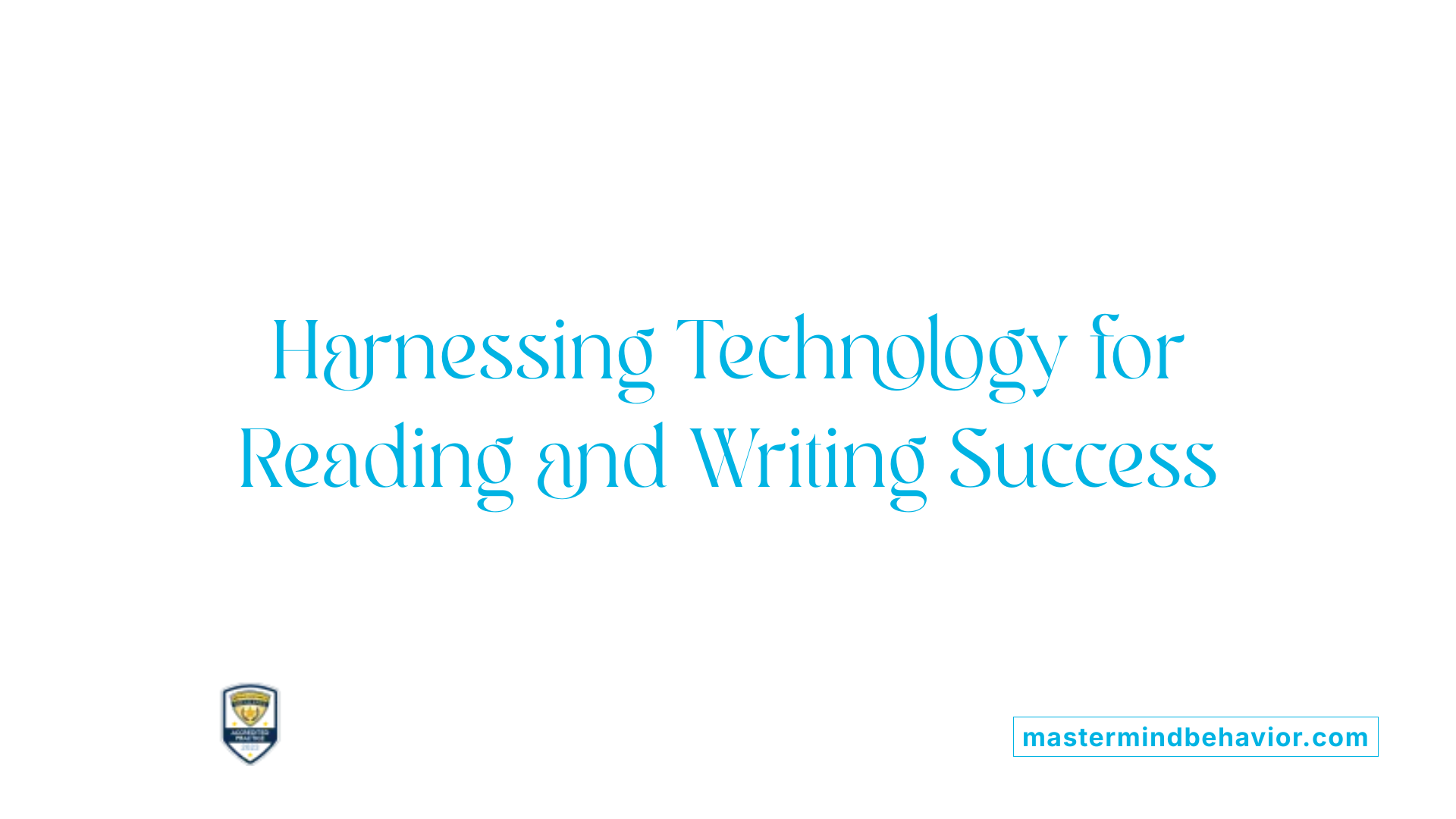
How can assistive technology support reading and writing in children with autism?
Assistive technology offers vital support for children with autism in developing literacy skills. It provides alternative ways for them to communicate and engage with reading and writing tasks. Speech-generating devices (SGDs), for example, enable children to express themselves and participate in reading activities, even if verbal communication is limited.
Digital literacy tools and apps are designed to adapt to individual needs, helping children learn fundamental skills like letter recognition, word matching, and sentence construction. These tools often include customizable features such as visual cues, audio feedback, and interactive prompts, which make learning accessible and engaging.
Visual supports play a crucial role when integrated with assistive technology. During reading, visual aids like pictures, symbols, and color-coded text can clarify meaning and help children connect written words to their corresponding objects or concepts. This approach caters to their strengths as visual learners and enhances understanding.
Computer-assisted instruction programs, such as the ABRA program, are gaining recognition for their effectiveness. They systematically teach phonics, decoding, and comprehension through interactive activities that adapt to each child's pace. These programs often succeed in increasing motivation and sustaining attention.
Furthermore, many children with autism find success using apps that incorporate gamification elements—rewards, progress tracking, and engaging graphics—to motivate practice. Some programs also support collaborative learning, allowing children to work with peers or therapists remotely.
Overall, assistive technology empowers children with autism to participate more fully in literacy activities. By promoting independence and offering multimodal learning options, these tools help improve reading comprehension, spelling, and overall communication skills.
Technologies Supporting Literacy for Children with Autism
| Technology Type | Description | Benefits | Examples |
|---|---|---|---|
| Speech-generating devices | Hardware or apps that produce spoken output | Enhances expressive communication | Tobii Dynavox, Proloquo2Go |
| Visual supports during reading | Digital or physical visual aids | Clarifies meaning, supports comprehension | Picture exchange communication systems (PECS), visual storybooks |
| Computer-assisted instruction and apps | Interactive programs for literacy skills | Promote engagement, adapt to individual levels | ABRA, Lexia, Reading A-Z |
Final Tips
- Tailor technology to individual preferences and strengths.
- Combine visual, auditory, and tactile supports for multisensory learning.
- Use positive reinforcement techniques to motivate progress.
- Integrate assistive tools into daily routines for consistency.
Using assistive technology, children with autism can overcome communication barriers and enhance their literacy skills, leading to greater independence and confidence in their academic journey.
Engagement Through Community and Everyday Life Activities
How can community activities support literacy skills?
Involving children with autism in community activities offers valuable opportunities to develop literacy skills in real-world contexts. Activities such as reading safety signs, store labels, and public instructions allow children to experience language and symbols as they naturally occur outside the classroom.
Exposure to environmental print, including street signs, store windows, and menus, helps children recognize and understand common symbols and words. These direct encounters reinforce their understanding of functional literacy skills needed for daily independence.
Engaging in these community-based experiences helps children see the relevance of reading and enhances motivation to learn. When children practice decoding in settings that matter to them, the learning becomes more meaningful and memorable.
Real-world literacy activities in daily routines
Incorporating literacy into daily routines can make learning practical and enjoyable. For example, parents and teachers can involve children in reading labels while grocery shopping, following instructions on medication bottles, or identifying symbols on public transportation.
Using visual aids, like picture cues or written words, supports children who require extra reinforcement. These activities also encourage a natural association between written language and real-life objects or actions.
By making literacy an active part of everyday life, children with autism develop confidence and fluency in using language. These experiences help them understand that reading and recognizing symbols are essential skills for navigating their environment.
Use of signs and symbols in the environment
The environment is full of visual cues and symbols that can be leveraged for literacy development. Placing clear, consistent signage at home, in schools, and in community spaces introduces children to the concept of written language as a tool for communication.
Interactive activities such as pointing to signs, matching symbols to objects, or following visual directions help children become familiar with the purpose and function of written cues. This approach promotes understanding that symbols can convey messages and guide behavior.
Encouraging children to interpret and use signs they encounter in daily life builds their ability to access information independently. It also fosters a sense of autonomy and enhances their social participation.
| Activity Type | Examples | Benefits |
|---|---|---|
| Community Sign Reading | Reading safety signs, store labels | Recognizes symbols, functional literacy |
| Daily Routine Integration | Reading grocery labels, following instructions | Practical skills, confidence |
| Environmental Sign Use | Pointing to signs, matching symbols | Comprehension, independence |
Leveraging community activities and everyday environments helps children with autism develop crucial literacy skills that extend beyond the classroom. These real-world experiences promote meaningful understanding and active participation in daily life.
Strategies for Enhancing Reading Comprehension
Building Background Knowledge
Creating a foundation of background knowledge is crucial for children with autism to understand new stories and concepts. Before reading, educators and parents can introduce related topics, visuals, or real-life experiences that connect with the story. For example, showing pictures of animals before reading a story about wildlife helps children make meaningful connections, making the story more relatable and easier to comprehend.
Visual Supports and Graphic Organizers
Using visual supports, such as picture schedules, story maps, and graphic organizers, can significantly improve understanding. Visual aids help children organize information, see the sequence of events, and clarify the relationships between ideas.
Graphic organizers like story maps or concept webs allow children to visually break down narrative components such as characters, setting, problem, and solution. These tools make abstract story elements concrete and accessible, especially for visual learners.
Explicit Instruction and Storytelling
Explicit teaching of story structures, vocabulary, and inferencing strategies supports comprehension. Teachers can model how to identify story elements and ask predictive or inferential questions.
Storytelling and retelling activities encourage active participation. When children retell stories using their own words or visual cues, they reinforce understanding and strengthen memory of content. These methods help children with autism grasp the organization of stories, enhance vocabulary, and improve inferencing skills.
Techniques Helping Teach Reading Comprehension
Using a combination of background activities, visual supports, and graphic organizers helps children understand stories better. Explicit instruction, along with modeling and storytelling, makes the abstract aspects of narrative and comprehension skills tangible.
By engaging these strategies, educators promote richer interaction with texts. This approach not only improves comprehension but also boosts confidence and motivation in children with autism, enabling them to participate more fully in literacy activities.
Structured, Evidence-Based Reading Interventions
What are effective interventions for teaching reading and writing?
Effective literacy teaching for children with autism involves direct, explicit, and systematic instruction across several components of reading. This approach includes teaching phonemic awareness, phonics, reading fluency, vocabulary, and comprehension strategies. Programs like ASD Reading and ABRA exemplify this method by incorporating multisensory techniques such as graphics, audio, and animation to reinforce both written and spoken language.
ASD Reading, for instance, is a specialized online program tailored for children with Autism Spectrum Disorder (ASD), capable of guiding learners to read, write, and comprehend up to a third-grade level. It features customized instruction, adapted to individual skills, and offers assessments to track progress systematically.
Similarly, the ABRA program delivers comprehensive, computer-assisted reading instruction designed to improve decoding skills and comprehension through engaging, systematic lessons. Both programs focus on individualized learning paths, emphasizing mastery of skills without overwhelming the learner.
Elements of research-based reading instruction
Research indicates that effective reading instruction for children with autism should address both the code-based and meaning-based aspects of reading. The five key components, often called the "Big Five," include phonemic awareness, phonics, reading fluency, vocabulary, and comprehension.
Children with autism tend to demonstrate strengths in decoding skills but often struggle with language comprehension. Therefore, a balanced approach that emphasizes explicit teaching of sequencing, vocabulary, and inferencing, alongside decoding skills, can foster better overall literacy.
Visual supports, such as letter tiles, flashcards, and real objects, aid understanding and retention. Incorporating these strategies in short, manageable sessions with positive reinforcement further promotes confidence and motivation.
Integrated programs like ASD Reading and ABRA
Programs like ASD Reading and ABRA integrate several evidence-based strategies into cohesive curricula. They utilize visual aids, multisensory inputs, and systematic instruction to create an engaging learning environment. These programs are often customizable, enabling educators to tailor the content to each child's unique interests and abilities.
Parents and teachers have reported positive outcomes when using these programs, citing improvements in decoding, vocabulary, and engagement. Importantly, they also help develop comprehension skills, which are crucial for academic success.
Prioritizing decoding and comprehension
While decoding (word recognition) is typically a relative strength in children with autism, comprehension poses a significant challenge. As a result, research emphasizes the importance of explicitly teaching comprehension strategies, including sequencing, predicting, visualizing, and inferring.
Story retelling, story mapping, and using visual supports are effective methods to bolster understanding. For bilingual or multilingual children, intervention content should respect language backgrounds and cultural contexts.
In sum, combining phonics with comprehension strategies within structured, multisensory curricula like ASD Reading and ABRA provides the most promising pathway to improve literacy outcomes for children on the spectrum. Regular assessments and individualized adjustments ensure that instruction remains relevant and effective for each learner.
Tailoring Instruction to Developmental and Individual Needs
How should literacy instruction be tailored for children with autism?
Effective literacy instruction for children with autism must be customized to meet their unique developmental levels, strengths, and interests. Rather than following a one-size-fits-all curriculum, educators and therapists should assess each child's current skills and personalize lessons accordingly.
This approach involves closely monitoring progress through systematic assessments and adjusting strategies to address areas needing improvement. For example, some children may excel in decoding words but struggle with comprehension, requiring targeted interventions that focus more on meaning and contextual understanding.
Using mastery-based approaches is also vital. This method emphasizes achieving competency in one skill before moving on to the next, reducing frustration and fostering confidence. It allows children to progress at their own pace, ensuring they build a solid foundation for more complex literacy tasks.
Visual supports, multisensory techniques, and technology can be incorporated to enhance engagement and understanding. For instance, color-coded letter tiles, picture symbols, and interactive digital programs can align with individual interests, making learning more motivating.
In summary, tailoring literacy instruction for children with autism involves creating personalized curricula, employing systematic progress monitoring, emphasizing mastery of foundational skills, and building on each child's abilities and preferences to foster successful reading and writing development.
Enhancing Critical Thinking and Narrative Skills
What methods improve understanding of stories?
Children with autism benefit from teaching strategies that foster comprehension and critical thinking. Story sequencing and retelling exercises are highly effective, helping children organize events in order and recall details accurately.
Using visual aids such as story maps, picture sequences, and story-related drawings encourages children to create mental images, which enhances understanding. Engaging activities like drawing scenes or characters from stories further support grasping the narrative and its structure.
Interactive methods, including asking questions about the story, making predictions, and encouraging retellings, deepen engagement. These approaches help children connect with story content and develop their language and reasoning skills.
Using visual aids to improve understanding
Visual tools serve as powerful supports for children with autism. Picture cards, visual schedules, and graphic organizers allow children to visually follow story flow, identify key details, and organize thoughts.
Storybooks with clear, colorful illustrations—such as 'Owl Moon' and 'Charlotte’s Web'—are excellent choices. These texts provide visual context, helping children connect words with images and comprehend the story better.
Visual aids also include cue cards with vocabulary words, story sequencing strips, and story maps. These resources make abstract concepts concrete, facilitating better understanding and retention.
Engaging children with narrative texts like 'Owl Moon' and 'Charlotte’s Web'
Narrative texts rich in visuals and descriptive language can spark children’s interest and foster comprehension. Teachers and parents often use books like 'Owl Moon' and 'Charlotte’s Web' to introduce sequencing, emotions, and story elements.
Techniques include discussing story setting, characters, and plot, along with visualizing scenes. Activities such as drawing favorite moments or acting out parts of the story help children internalize the narrative.
Games like story retelling, 'What happens next?' discussions, and sequencing puzzles keep children actively involved. These methods not only develop story understanding but also promote social interaction and language skills.
Incorporating these multisensory and interactive strategies is essential for supporting children with autism to understand stories critically and enjoy literary experiences. Tailoring activities to individual interests and abilities maximizes engagement and learning success.
| Method | Description | Best For |
|---|---|---|
| Story sequencing | Arranging story events in order with visuals | Developing narrative structure understanding |
| Retelling | Repeating story in own words | Enhancing memory and expressive language |
| Visual aids | Using pictures, story maps, cue cards | Clarifying story elements and flow |
| Drawing activities | Creating illustrations related to the story | Building mental images and visuals |
| Interactive reading | Discussing, predicting, questioning | Promoting active engagement and comprehension |
Understanding stories thoroughly involves combining these approaches to suit each child's needs. As research suggests, these methods foster not just literacy, but also critical thinking and enjoyment of reading.
Fostering Social and Emotional Understanding through Literacy
How can literacy support social-emotional skills?
Reading and engaging with stories provide powerful tools for fostering social and emotional development in children with autism. Stories that highlight social themes and emotions help children learn to recognize feelings in themselves and others, promoting empathy. When combined with explicit teaching—such as discussing characters' emotions and motives—and interactive activities, literacy becomes a dynamic way to develop crucial social skills.
Using stories like 'Owl Moon' or 'Charlotte’s Web,' educators and parents can guide children to identify emotions and understand social cues through discussion and role-play. For example, acting out story characters' reactions or using props can deepen understanding and make learning social and emotional concepts more concrete.
Using stories for social learning
Stories serve as mirrors and windows: they reflect children’s experiences and open windows into others’ perspectives. When children with autism participate in shared reading sessions, they can practice recognizing facial expressions, body language, and contextual cues that convey feelings. Incorporating visuals and gestures during reading enhances comprehension and engagement.
Explicit teaching of social/emotional vocabulary
Introducing specific words such as ‘happy,’ ‘sad,’ ‘angry,’ and ‘afraid’ lays the foundation for understanding complex social-emotional concepts. Visual supports, like picture symbols or emotion charts, help children associate words with feelings. Repeating and practicing these terms in different contexts strengthens their understanding and application.
Interaction with story characters and props
Interactive activities, such as turning pages, pointing to words, and using props or costumes, make stories more engaging. Acting out scenes and demonstrating emotional reactions encourage children to connect words with actions, fostering both language and social awareness. For instance, using dolls or puppets to show emotions can help children practice empathy and perspective-taking.
By integrating these strategies, literacy becomes a vital component of social-emotional learning, equipping children with autism to navigate their social worlds more effectively.
Visualizing and Predicting to Deepen Comprehension
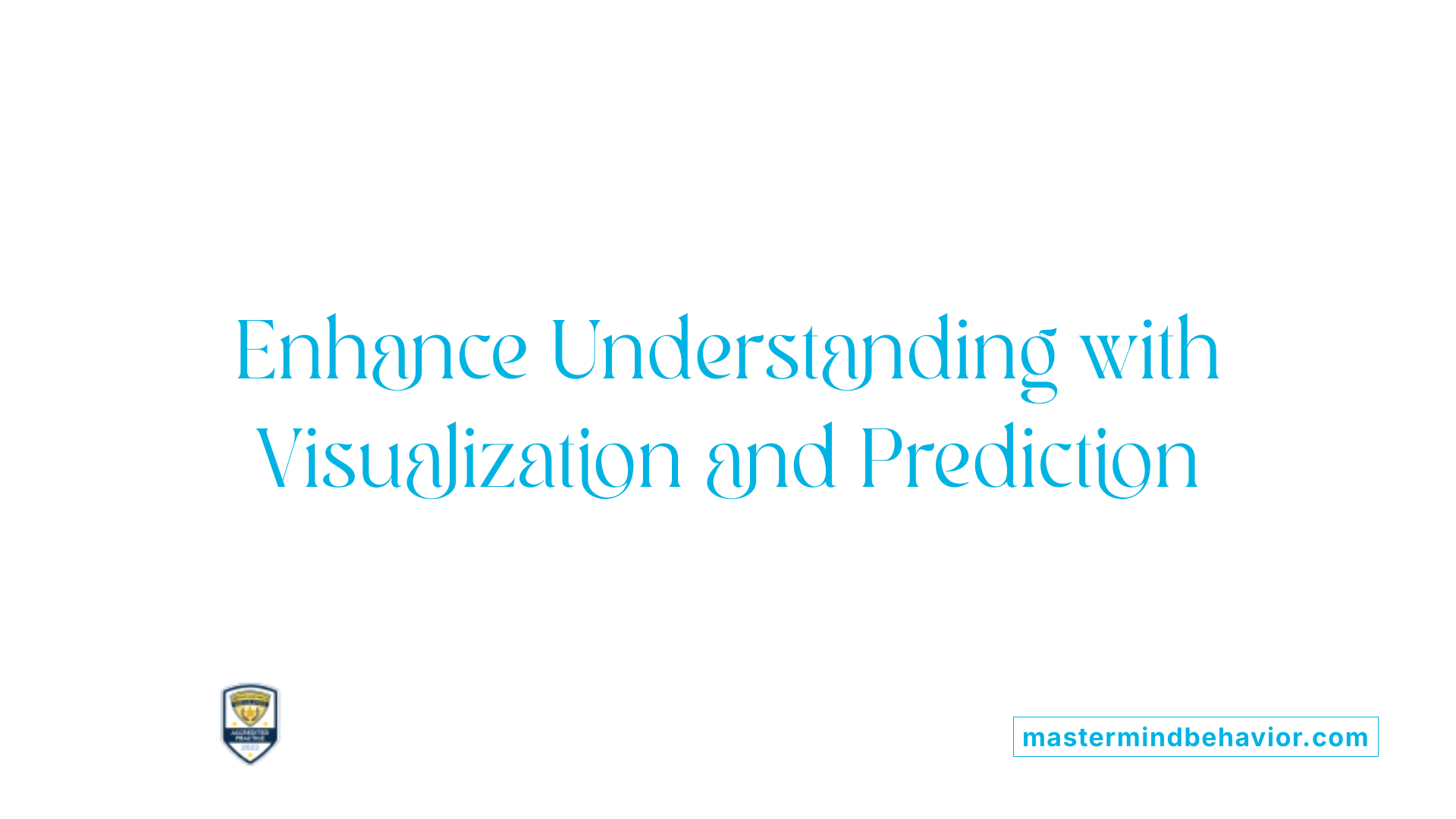
What strategies develop comprehension skills?
Developing strong reading comprehension skills in children with autism involves targeted activities that promote understanding beyond decoding words. Visualization exercises are highly effective; children are encouraged to create mental images of story events, which can be supported through drawing or illustrating scenes from the text.
Story mapping and drawing help children connect narrative details to visual representations, solidifying their understanding of story structure and content. These activities enhance their ability to grasp story elements like characters, setting, and plot.
Predictive reading strategies involve engaging children before, during, and after reading to foster higher-order thinking skills. For example, asking questions such as "What do you think will happen next?" or predicting outcomes based on initial story cues actively involve children in the reading process.
During the reading, children may be prompted to anticipate story developments, which encourages active participation and comprehension. Post-reading activities, like summarizing or discussing story resolution, further deepen understanding and help retain information.
Using well-chosen books supports these comprehension strategies. Books like "Tuesday" and "If You Give a Mouse a Cookie" are excellent choices for practicing sequencing and predicting because they contain predictable patterns and engaging plots that invite children to think ahead.
Activities such as drawing scenes from the story, asking predictive questions, and retelling stories using visual aids can significantly improve how children with autism understand narratives.
Incorporating these methods into literacy routines provides visual and cognitive supports that cater to strengths in visual learning and enhance overall comprehension abilities.
Training Educators and Caregivers in Literacy Instruction
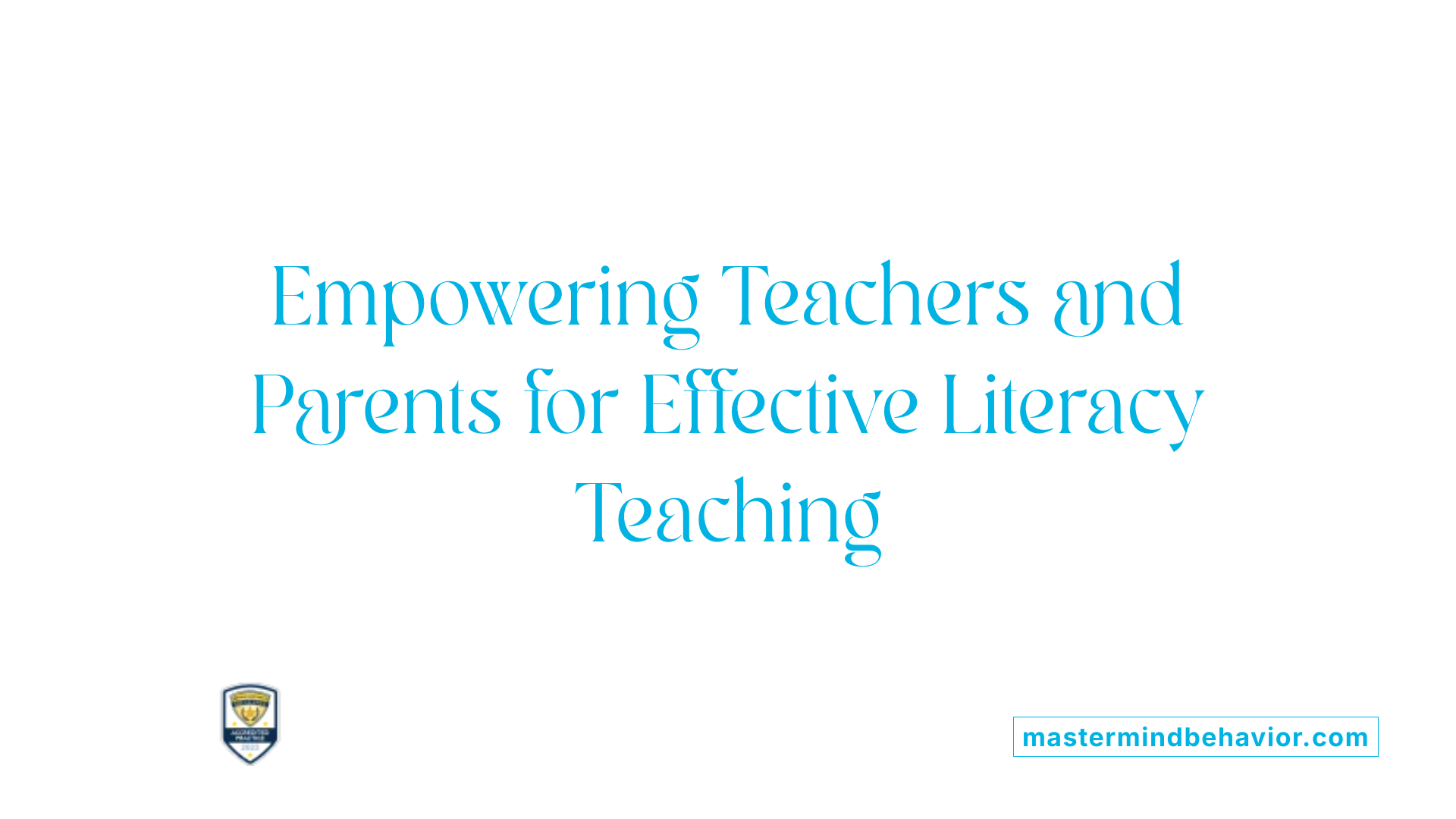
How can educators improve their teaching of literacy?
Providing effective literacy instruction to children with autism requires specialized training and ongoing support. Educators must learn evidence-based strategies that address the unique learning styles of these children, such as using visual aids, multisensory techniques, and structured, sequenced lessons. Training programs focused on autism-specific literacy methods, like explicit phonics instruction, visual supports, and social-cognitive approaches, help teachers deliver tailored lessons.
Involving families and interdisciplinary teams is also vital. Parents, speech therapists, occupational therapists, and classroom teachers can collaborate to create consistent, supportive learning environments at home and school. Regular communication ensures that strategies are reinforced across settings, which enhances children’s progress.
Ongoing professional development keeps educators updated on new research, technologies, and curricula. Resources such as online courses, workshops, and professional learning communities enable teachers to refine their skills continuously. For example, programs like ASD Reading or the PRIDE Reading Program offer specialized training that equips educators to implement effective literacy practices.
Collectively, these efforts—training in proven methods, family involvement, and continuous learning—are crucial for elevating literacy outcomes for children with autism. Building teachers' confidence and competence ensures a supportive classroom where each child's reading potential can be realized.
Addressing Developmental and Emotional Barriers
What techniques can reduce anxiety and increase motivation?
Children with autism often face challenges related to anxiety and motivation, especially when engaging with literacy activities. To support their learning, educators and parents can utilize several effective strategies.
First, establishing structured routines helps create predictability. When children know what to expect during activities, it reduces uncertainty and anxiety. Consistent schedules and clear, visual timetables make transitions smoother and help children feel secure.
Positive reinforcement plays a crucial role in maintaining motivation. Celebrating small successes with praise, stickers, or preferred activities encourages children to try again and fosters a positive attitude toward learning.
Sensory supports are also beneficial. Incorporating calming sensory activities, such as soft tactile materials, proprioceptive exercises, or oral-based supports like calming sounds, can help children stay focused and calm. These supports can be integrated into literacy time, such as giving children a sensory break before or after a session.
By combining these techniques—structured routines, positive reinforcement, and sensory supports—adults can create a supportive learning environment that minimizes anxiety and enhances motivation for children with autism. This approach helps them engage more fully in developing essential literacy and pre-writing skills.
Supporting Development through Visual and Sensory Strategies
Using visual supports, like charts and picture schedules, combined with sensory activities, significantly impacts children’s ability to participate. These approaches tap into the strengths of many children with autism, who are often visual learners and benefit from tactile experiences.
In summary, tailored, supportive strategies that address emotional and developmental needs are vital to foster literacy growth in children with autism, ensuring they can participate confidently and enjoyably.
Moving Toward Inclusive Literacy Education
Effective literacy instruction for children with autism combines evidence-based strategies, personalized approaches, assistive technology, and community-based activities. By recognizing their unique strengths and addressing challenges with targeted interventions, educators and caregivers can foster meaningful reading and writing skills, promoting inclusion and lifelong learning.
References
- Autism and learning to write
- Teaching children with nonverbal autism to read
- Supporting the Literacy Development of Students with Autism
- Teaching Reading and Spelling to Children with Autism—6 Great Tips!
- ASD Reading: Reading Books, Programs & Activities for Kids & Child
- Reading and Writing Skills in Adolescents With Autism Spectrum ...
- Evidence-Based Reading Instruction for Individuals with Autism ...
- Teaching Students with Autism Reading Comprehension
- 6 Easy to Implement Strategies for Teaching a Child with Autism to ...









